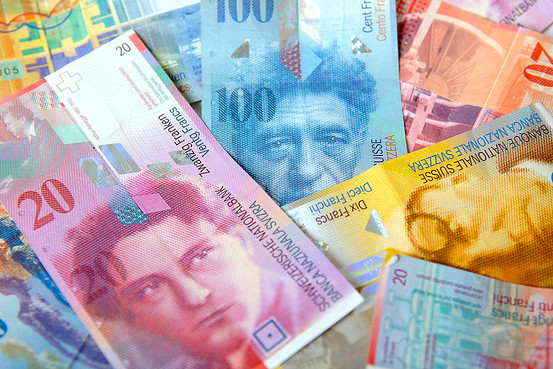
The uniqueness of the Swiss franc owes to the fact that it’s the only extant variant of the franc issued in Europe. Following a treaty mandating all EU member countries, France adopted the Euro system of currency thus giving up the French franc.
The Swiss franc or CHF—Confoederatio Helvetica Franc—is the official currency of Switzerland and Liechtenstein. In the Italian exclave Campione d’Italia the Swiss franc is legally recognized, while it is widely circulated in the German exclave Büsingen whose legal currency is the Euro. Switzerland is a multilingual country and recognizes four national languages—German, French, Italian and Romansh. For this reason, the wording in Swiss franc currency is neutral, using Latin since it was the last known commonly-used language among the populace.
The Swiss franc uses ₣ or S₣ signs and its international currency code is CHF. Due to the quadrilingual nature of the nation the Swiss franc is also known by the following: ‘Franken’ in German, French and Romansh, while ‘Franco’ in Italian. The term ‘franc’ originates from the Latin ‘Francorum Rex’ or ‘King of Franks’ inscribed in old French coins. (The Franks were the precursor of Western European Empires that dominated the continent and the rest of the world in the middle ages.)
In the English language, references to Swiss franc denominations are adopted from the French names—hence one Swiss franc is equivalent to one hundred centime (‘rappen’ in German, ‘centismo’ in Italian, and ‘rap’ in Romansh). The Swiss National Bank is in charge of issuing banknotes that come in 10, 20, 50, 100, 200, and 1000 denominations while the federal Swissmint issues 5, 10 and 20 centimes and 1/2, 1, 2, and 5 Swiss franc coins.
Although it isn’t a member of the European Union, Switzerland coheres with the economic and financial practices of the EU so that the Swiss franc can compete internationally. In fact, the financial institutions in Switzerland are very strong that the nation doesn’t need to consider adopting the Euro currency unit. Swiss franc reserves also pose as a contender against the popularity of other world currencies such as the US dollar and the Euro, ranking fifth or sixth overall. The Swiss franc has been leveraging around the weakness of the US dollar against the value of the Euro, closing at about 0.967 CHF to $1 USD in 2010. Since the middle of 2003 the value of the Swiss franc has remained stable against the Euro but it actually has less purchasing power due to the higher cost of living in Switzerland.

Swiss Franc

No comments:
Post a Comment
Feel free to place you thoughts here